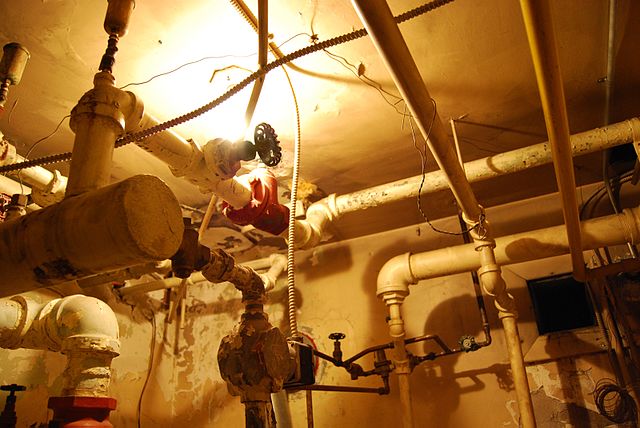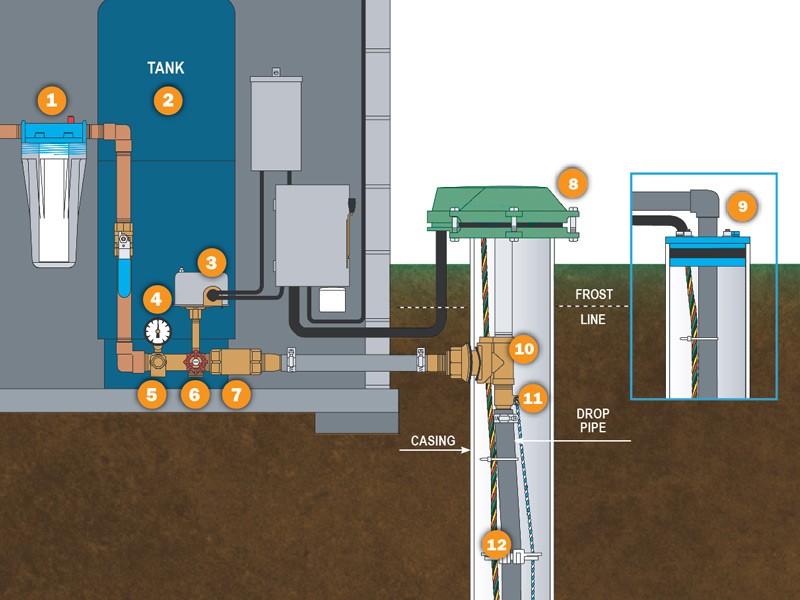Exploring Your House's Plumbing System Anatomy
Exploring Your House's Plumbing System Anatomy
Blog Article
Just how do you actually feel in regards to Anatomy of a House: Understanding the Components?

Recognizing how your home's pipes system functions is vital for every single homeowner. From delivering tidy water for drinking, food preparation, and bathing to securely removing wastewater, a well-kept pipes system is crucial for your family's health and wellness and convenience. In this thorough guide, we'll check out the elaborate network that comprises your home's pipes and offer suggestions on upkeep, upgrades, and dealing with typical concerns.
Intro
Your home's pipes system is more than just a network of pipes; it's a complex system that ensures you have access to clean water and effective wastewater elimination. Recognizing its components and exactly how they collaborate can aid you protect against expensive fixings and make certain everything runs smoothly.
Fundamental Parts of a Pipes System
Pipelines and Tubes
At the heart of your pipes system are the pipes and tubes that bring water throughout your home. These can be constructed from numerous products such as copper, PVC, or PEX, each with its benefits in regards to resilience and cost-effectiveness.
Components: Sinks, Toilets, Showers, and so on.
Components like sinks, commodes, showers, and bath tubs are where water is made use of in your house. Recognizing just how these components attach to the pipes system aids in detecting troubles and intending upgrades.
Shutoffs and Shut-off Factors
Valves manage the circulation of water in your pipes system. Shut-off shutoffs are critical throughout emergency situations or when you require to make fixings, permitting you to isolate parts of the system without disrupting water flow to the entire residence.
Water Supply System
Key Water Line
The primary water line links your home to the metropolitan supply of water or an exclusive well. It's where water enters your home and is dispersed to various fixtures.
Water Meter and Stress Regulatory Authority
The water meter actions your water usage, while a pressure regulator guarantees that water flows at a safe pressure throughout your home's plumbing system, avoiding damages to pipelines and components.
Cold Water vs. Warm water Lines
Understanding the distinction between cold water lines, which supply water directly from the major, and hot water lines, which carry heated water from the water heater, aids in repairing and planning for upgrades.
Drainage System
Drain Pipes Pipes and Traps
Drain pipelines bring wastewater far from sinks, showers, and toilets to the sewer or septic tank. Catches avoid drain gases from entering your home and additionally catch particles that could cause clogs.
Ventilation Pipes
Air flow pipelines permit air into the drainage system, protecting against suction that can reduce drainage and trigger catches to vacant. Correct air flow is essential for maintaining the integrity of your pipes system.
Relevance of Correct Water Drainage
Making certain correct water drainage stops back-ups and water damage. Frequently cleaning drains pipes and preserving catches can avoid expensive repairs and expand the life of your pipes system.
Water Heating Unit
Sorts Of Hot Water Heater
Hot water heater can be tankless or standard tank-style. Tankless heating units warm water on demand, while storage tanks save heated water for instant use.
Updating Your Plumbing System
Factors for Upgrading
Upgrading to water-efficient components or replacing old pipelines can improve water quality, reduce water bills, and raise the value of your home.
Modern Pipes Technologies and Their Advantages
Check out modern technologies like smart leakage detectors, water-saving commodes, and energy-efficient water heaters that can conserve money and lower environmental effect.
Price Considerations and ROI
Compute the upfront expenses versus long-term cost savings when taking into consideration plumbing upgrades. Lots of upgrades pay for themselves through decreased utility bills and fewer repair services.
How Water Heaters Attach to the Plumbing System
Recognizing exactly how hot water heater connect to both the cold water supply and warm water distribution lines assists in diagnosing problems like not enough hot water or leakages.
Upkeep Tips for Water Heaters
On a regular basis flushing your hot water heater to remove debris, inspecting the temperature settings, and evaluating for leaks can prolong its lifespan and improve power performance.
Common Pipes Concerns
Leaks and Their Causes
Leaks can occur due to maturing pipelines, loose fittings, or high water pressure. Resolving leakages quickly stops water damage and mold development.
Obstructions and Blockages
Blockages in drains pipes and commodes are often triggered by flushing non-flushable products or a build-up of oil and hair. Making use of drain screens and being mindful of what drops your drains pipes can prevent clogs.
Indications of Pipes Troubles to Expect
Low tide pressure, slow drains, foul odors, or unusually high water costs are signs of potential plumbing issues that must be resolved without delay.
Plumbing Maintenance Tips
Regular Inspections and Checks
Schedule annual plumbing evaluations to capture issues early. Search for indications of leaks, rust, or mineral buildup in faucets and showerheads.
Do It Yourself Upkeep Tasks
Straightforward jobs like cleansing tap aerators, looking for commode leakages making use of color tablet computers, or shielding subjected pipelines in cold climates can prevent major plumbing concerns.
When to Call a Specialist Plumbing Technician
Know when a pipes problem needs expert competence. Attempting complex fixings without correct expertise can result in even more damages and higher repair prices.
Tips for Minimizing Water Use
Easy habits like fixing leakages without delay, taking much shorter showers, and running full loads of washing and meals can conserve water and lower your energy expenses.
Eco-Friendly Plumbing Options
Think about sustainable plumbing materials like bamboo for flooring, which is durable and eco-friendly, or recycled glass for countertops.
Emergency situation Readiness
Steps to Take During a Pipes Emergency situation
Know where your shut-off valves are located and how to switch off the supply of water in case of a ruptured pipeline or major leak.
Significance of Having Emergency Calls Helpful
Keep call info for local plumbings or emergency situation services easily offered for quick reaction throughout a pipes crisis.
Ecological Effect and Preservation
Water-Saving Components and Home Appliances
Mounting low-flow faucets, showerheads, and bathrooms can significantly decrease water use without sacrificing performance.
Do It Yourself Emergency Fixes (When Suitable).
Temporary fixes like utilizing duct tape to spot a leaking pipe or putting a pail under a leaking tap can minimize damages until a specialist plumber shows up.
Verdict.
Comprehending the makeup of your home's plumbing system equips you to preserve it effectively, saving time and money on fixings. By complying with normal maintenance regimens and remaining informed regarding modern-day plumbing modern technologies, you can ensure your pipes system runs effectively for several years to come.
HOW YOUR PLUMBING SYSTEM WORKS
Which Pipes Do What?
Blue lines = fresh water supply entering the building Red lines = hot water supply entering the building Grey lines = pipes carrying waste away from the building and venting pipes carrying gases away from the building (through the roof) YOUR MAIN PLUMBING SYSTEMS
There are two main plumbing systems that support your home s basic plumbing needs one that brings clean water into your home, and one that sends dirty water away from your home. Connected to the toilet, bath, shower, and other faucets in your home, these two systems keep your water flowing in the right directions.
ACCESSING FRESH WATER
Fresh and clean water is brought into your home through the main water supply line . Filtered through one pipe, this water is pressured to flow into the various fixtures in your home at any given time.
This water can be sourced from a well located on your property, a pond or river (mostly cottages), or, as in most cases, from the city s municipal water treatment centre. However, it is important to note that water that is untreated, such as the water siphoned from ponds or rivers, may not be safe to drink. Personal water supplies always need to be treated for hardness and contaminants before consumed.
MUNICIPAL WATER SUPPLIES
Improve taste and odour Remove sediment Eliminate hardness Reduce chlorine COLD WATER SUPPLY VS. HOT WATER SUPPLY
Cold water flows into your home or building through the service line, which then distributes hot or cold water to your fixtures. This line is most commonly run through a central column that runs floor to floor. Hot water runs in short and straight pipes as the longer the pipeline, the more heat that will be lost in the transfer. Having shorter pipes also allows residents to access hot water more quickly.
WASTE WATER SYSTEM
Your wastewater system is divided into two parts pipes that send wastewater away from your home and venting pipes that send sewer gas away from your home. Sewage water travels through pipes that flush the water and waste towards local sewers that are operated and managed by your city or town. Most sewer systems rely on gravity to move the wastewater to where it needs to go.
The further away from your toilet or sink, the larger wastewater pipes become. This allows for waste to be disposed of from various parts of your home or business at once without pipe blockages. The angle and flow of these pipes are also essential for keeping your waste pipes clear of build up.
https://harrisplumbing.ca/how-your-home-plumbing-system-works/

We had been guided to that write-up on Understanding Your Home's Plumbing Anatomy through an acquaintance on our other web page. Enjoyed reading our post? Please quickly share it. Help someone else check it out. Thanks so much for taking the time to read it.
Visit Link Report this page